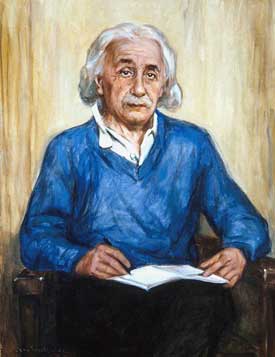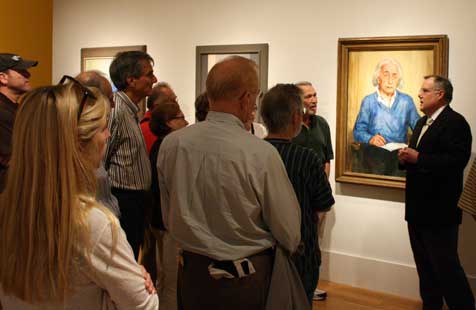Portrait of Albert Einstein by Max Westfield

National Portrait Gallery, Smithsonian Institution;
gift of the artist
The most brilliant scientist of the twentieth century, physicist Albert Einstein inspires comparisons to Isaac Newton. By the time he reached thirty, his theory of relativity and work in quantum mechanics had revolutionized physics and profoundly altered our perception of the world.
Einstein naturally commanded great prestige in the United States when he sought refuge from the Nazi regime of his native Germany in 1933. His words thus carried enormous weight in 1939 when he wrote a letter alerting President Roosevelt that Germany was moving toward the development of nuclear weaponry. Eventually, that warning gave impetus to the Manhattan Project, the top-secret venture that in 1945 produced the world's first atomic bomb.
While sitting for this likeness in 1944, Einstein mused to his portraitist, "After fifty years they will say of me, either he was a great man or a fool!"
David Ward, historian at the National Portrait Gallery, recently discussed Albert Einstein at a Face-to-Face portrait talk. This 1944 portrait is on view at the National Portrait Gallery, in the exhibition “Twentieth Century Americans” on the museum’s third floor.
>> Listen to David Ward's Face-to-Face talk on Albert Einstein (32:23)
Face-to-Face occurs every Thursday evening at the National Portrait Gallery. The next Face-to-Face talk is this Thursday, September 10, when Liz Rideal of London's National Portrait Gallery speaks about John Singleton Copley's self-portrait. The talk runs from 6:00 to 6:30 p.m. Visitors meet the presenter in the museum’s F Street lobby and then walk to the appropriate gallery.
